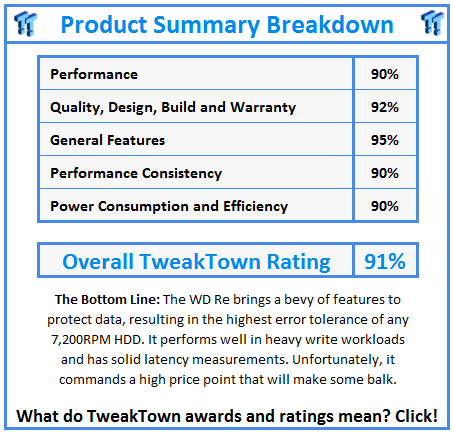Introduction
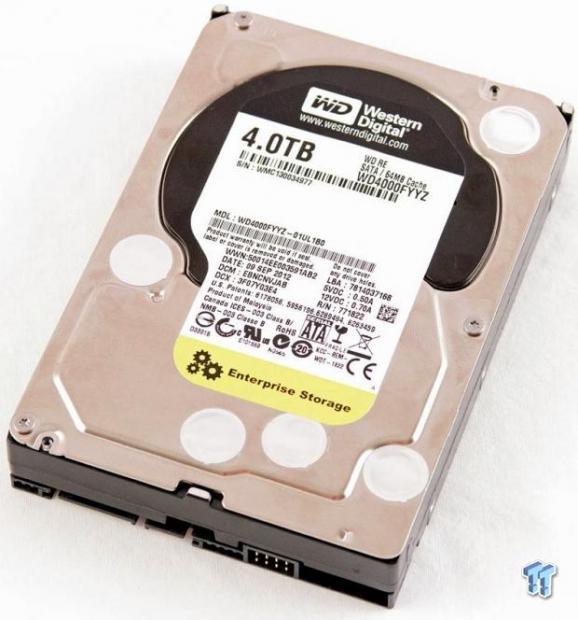
The WD Re (WD4000FYYZ) comes in both 6Gb/s and 3Gb/s SATA and SAS flavors in a 7,200 RPM 3.5" form factor. The Re is geared for heavy workload environments in the datacenter, including RAID arrays, external storage arrays, data warehousing and data mining operations. The WD Re comes in a multitude of capacities, including 250GB, 500GB and the larger capacities, which weigh in from 1TB to 4TB's.
The RE fits in the middle of the WD datacenter product stack, with the Xe and Se bookends delivering different levels of service. The Xe provides the ultimate in performance with a SAS interface and 10,000 RPM's on tap. The Se is a 7,200 RPM HDD for less demanding workloads, delivering the incrementally lower performance via a SATA connection. The Re, or RAID Edition, HDD features higher resilience and performance than the Se in spite of the utilizing the same 7,200 RPM spindle speed.
HDD failures are a constant reality in the datacenter, and with some datacenters supporting tens of thousands of servers per location, and some housing far more, this constant stream of failures requires intense micromanagement. Workers spend countless man-hours replacing failed drives, and RAID rebuild periods strangle server performance and bring the threat of downtime. Once removed, failed drives are typically physically destroyed to protect customer or company data, adding yet another layer of expenditure to an already expensive process.
The Re brings a mix of different features that combine to deliver the higher speed and durability required in datacenter applications with heavy write workloads. The Re is designed to handle up to 550TB per year. The inclusion of a SAS interface also widens the spectrum of capabilities for the Re series. The SAS interface provides HA (High Availability) full duplex features, such as failover and multipath, and the robust SAS feature set.
The higher reliability of the Re, which features an MTBF of 1.2 million hours, helps to reduce the never-ending drive replacement cycle. While high-capacity drives from the competition also offer impressive MTBF specifications, the Re really distances itself from the competition with an industry leading 10E16 non-recoverable read errors per bits read. This is a 100x improvement over other drives with a 10E15 rating.
The Re also features a dual-core processor, with twice the processing power to boost performance. The SATA version features a healthy 64MB of cache, while the SAS version utilizes 32MB of cache. This combination combines to deliver up to 171 MB/s of sequential throughput for SATA, and 182 MB/s for the SAS version.
RAID-specific time-limited error recovery (TLER) prevents the drive from dropping in a RAID array due to an extended hard drive error-recovery. Dual actuator technology provides precise placement of the head over data tracks, while StableTrac secures both ends of the motor shaft to reduce vibration in multi-drive deployments. The WD Re series also has SED offerings with AES 256-bit encryption and Crypto Erase functionality for users with more stringent security demands. The SED drives support the T13 Sanitize command and the ATA Password support of Secure Erase Unit (SEU).
Reliability is key, and WD subjects their enterprise drives to at least five million hours of functional testing, and over 20 million hours of interoperability testing. Each individual drive also experiences an extended burn-in with thermal cycling to ensure reliability. The intense qualification and testing leads to a five-year warranty for the Re series of drives.
WD Re 4TB Specifications
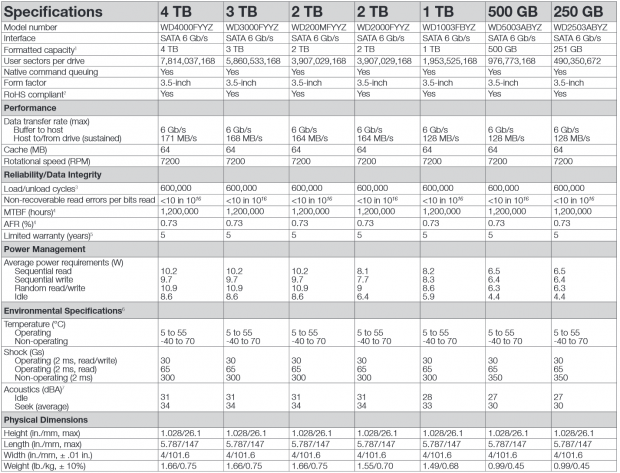
The WD Re provides a sustained transfer rate of 171 MB/s for SATA and 182 MB/s for the SAS model. This is delivered via five 800GB platters at 7,200 RPM and a 6Gb/s connection. WD Re series of HDDs comes in a standard 3.5" form factor.
For typical workloads, the drive pulls an average of 10.2 Watts for sequential read, and 9.7 Watts for sequential write workloads. Random read/write power consumption comes in at 10.9 Watts, and the idle voltage is spec'd at 8.6 Watts.
An MTBF of 1.2 million hours leads to an Annual Failure Rate (AFR) of .7 and a five-year warranty. The Re is rated for 600,000 load/unload cycles in a controlled environment. A multi-axis shock sensor helps to adjust the drive during shock and high vibration events, while the NoTouch ramp load technology ensures that the recording head never touches the platters, resulting in less wear to both the head and drive media.
The Re is designed for up to 550TB of use per year, which is significantly higher than the workload tolerance of the Se and Red drives.
WD Re 4TB Internals
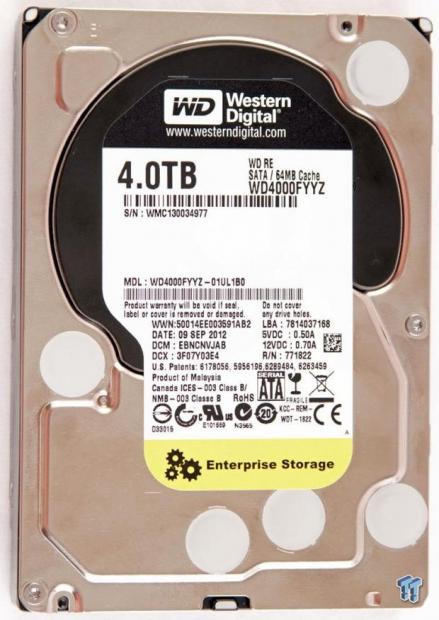
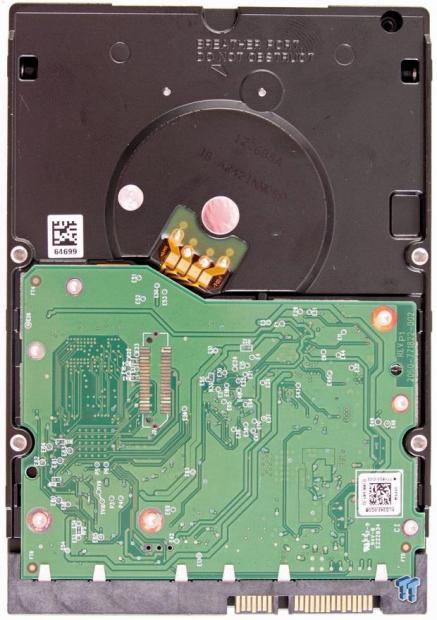
The WD Re comes in a standard 3.5 form factor. The components on the bottom of the HDD PCB are faced inward to avoid damage, and also allow the components to shed heat into the case of the HDD.
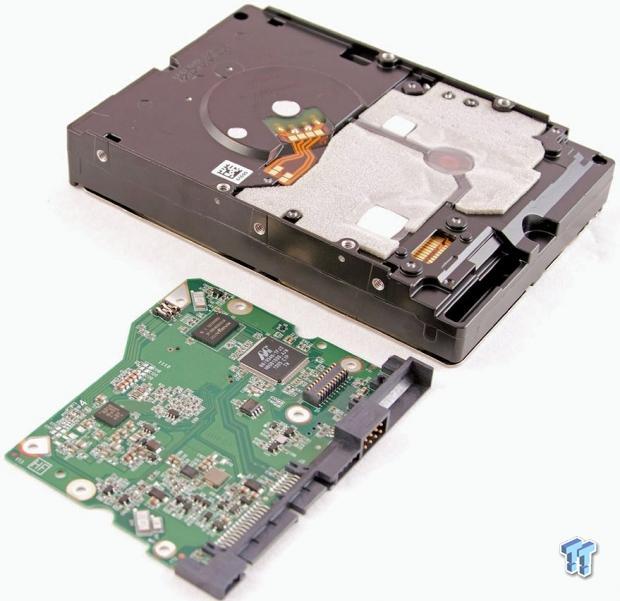
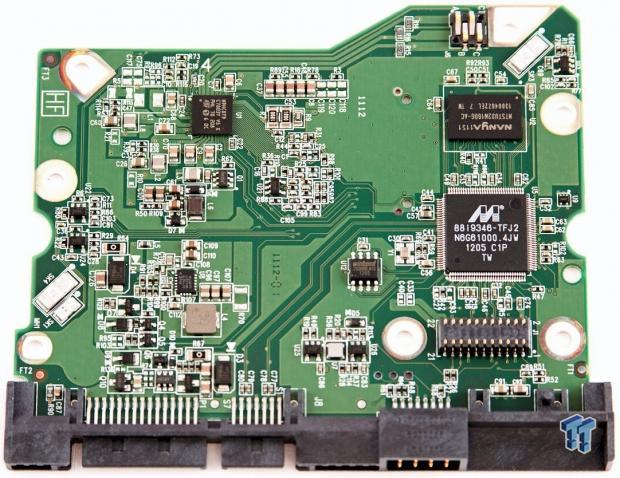
Removing the PCB reveals the foam pad used to dampen vibration during use. We also observe the dual thermal pads used for the drive controller and motor controller on the base of the HDD.
The NANYA chip is a 64MB DDR2 component for caching. A controller to control the drive motor resides to the upper left, and a Marvell 88i9346-TFJ2 dual-core drive controller dominates the lower right of the PCB.
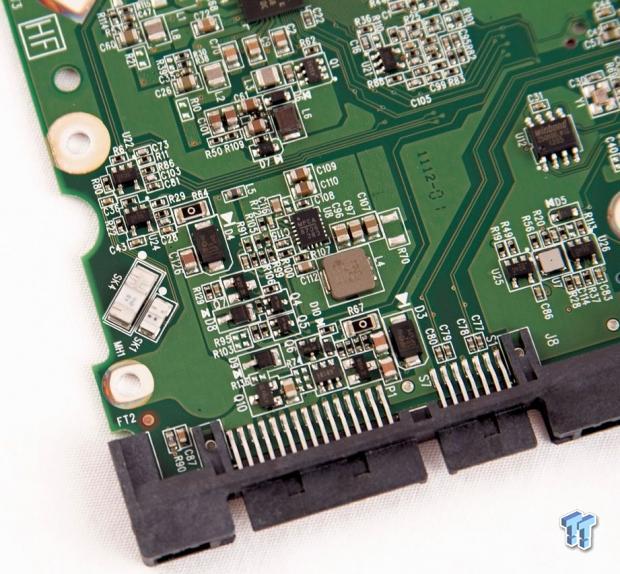
The small angled components marked SK1 and SK4 are multi-axis accelerometers that allow the drive to detect vibration and shock, and compensate accordingly. There is an additional sensor to the upper right of the PCB (out of view in this shot).
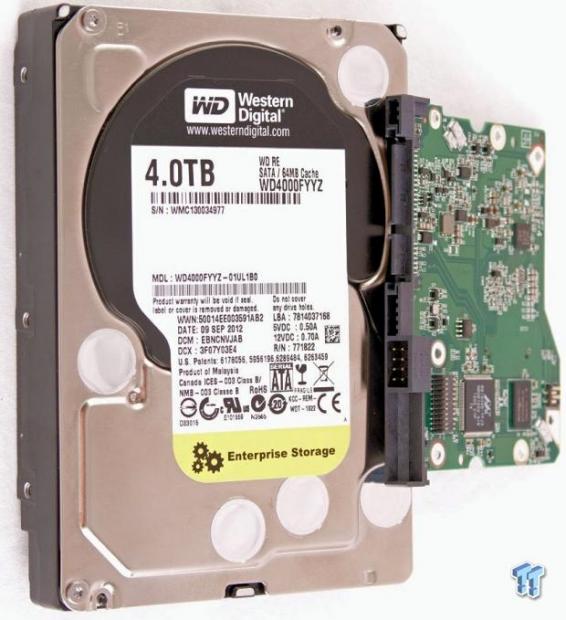
The Re version we are testing today features a 6Gb/s SATA connection, and there are also SAS versions available as we mentioned earlier.
Test System and Methodology
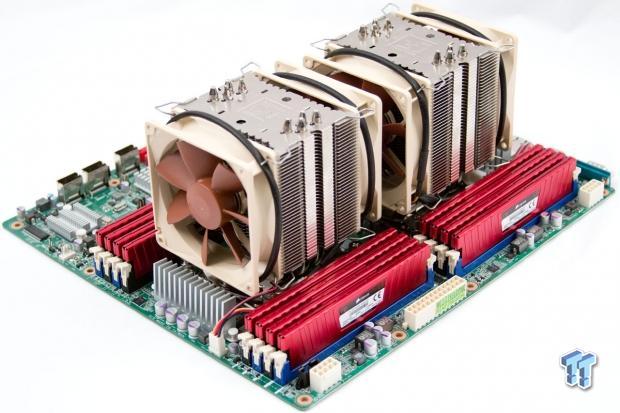

We utilize a new approach to HDD and SSD storage testing for our Enterprise Test Bench, designed specifically to target long-term performance with a high level of granularity.
Many testing methods record peak and average measurements during the test period. These average values give a basic understanding of performance, but fall short in providing the clearest view possible of I/O QoS (Quality of Service).
'Average' results do little to indicate the performance variability experienced during actual deployment. The degree of variability is especially pertinent, as many applications can hang or lag as they wait for I/O requests to complete. This testing methodology illustrates performance variability, and includes average measurements, during the measurement window.
While under load, all storage solutions deliver variable levels of performance. While this fluctuation is normal, the degree of variability is what separates enterprise storage solutions from typical client-side hardware. Providing ongoing measurements from our workloads with one-second reporting intervals illustrates product differentiation in relation to I/O QOS. Scatter charts give readers a basic understanding of I/O latency distribution without directly observing numerous graphs.
Consistent latency is the goal of every storage solution, and measurements such as Maximum Latency only illuminate the single longest I/O received during testing. This can be misleading, as a single 'outlying I/O' can skew the view of an otherwise superb solution. Standard Deviation measurements consider latency distribution, but do not always effectively illustrate I/O distribution with enough granularity to provide a clear picture of system performance. We use histograms to illuminate the latency of every single I/O issued during our test runs.
We measure power consumption during test runs. This provides measurements in time-based fashion, with results every second, to illuminate the behavior of power consumption in steady state conditions. Power consumption can cost more over the life of the device than the initial acquisition price of the hardware itself. This significantly affects the TCO of the storage solution. We also present IOPS-to-Watts measurements to highlight the efficiency of the storage solution.
All HDDs for today's evaluation are of the 4TB capacity point. We conduct our tests over the full LBA range to allow each HDD to highlight its average performance. Short stroking can increase performance at the loss of capacity. The first page of results will provide the 'key' to understanding and interpreting our new test methodology.
4K Random Read/Write
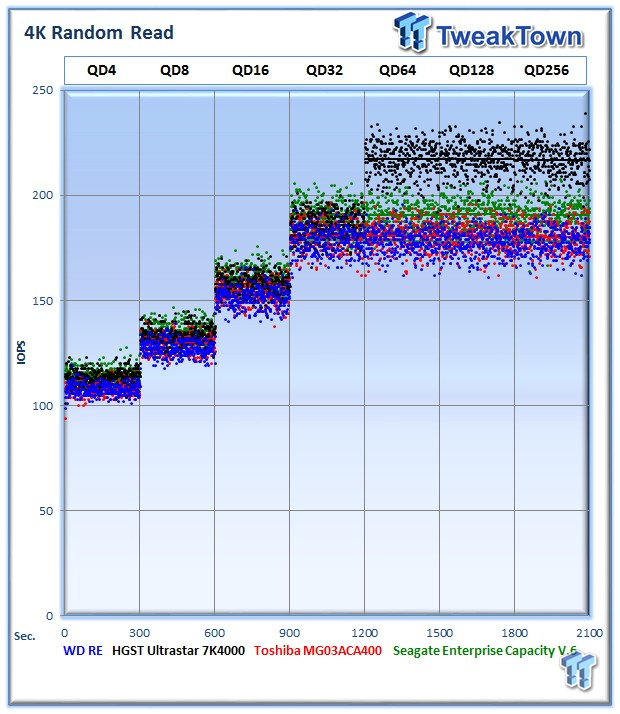
Each QD for every parameter tested includes 300 data points (five minutes of one second reports) to illustrate the degree of performance variability. The line for each QD represents the average speed reported during the five-minute interval.
4K random speed measurements are an important metric when comparing drive performance, as the hardest type of file access for any storage solution to master is small-file random. One of the most sought-after performance specifications, 4K random performance is a heavily marketed figure.
The WD Re averages 178 IOPS, while the HGST Ultrastar 7k4000 leads the heavy 4K read workload with an average of 216 IOPS at QD256.
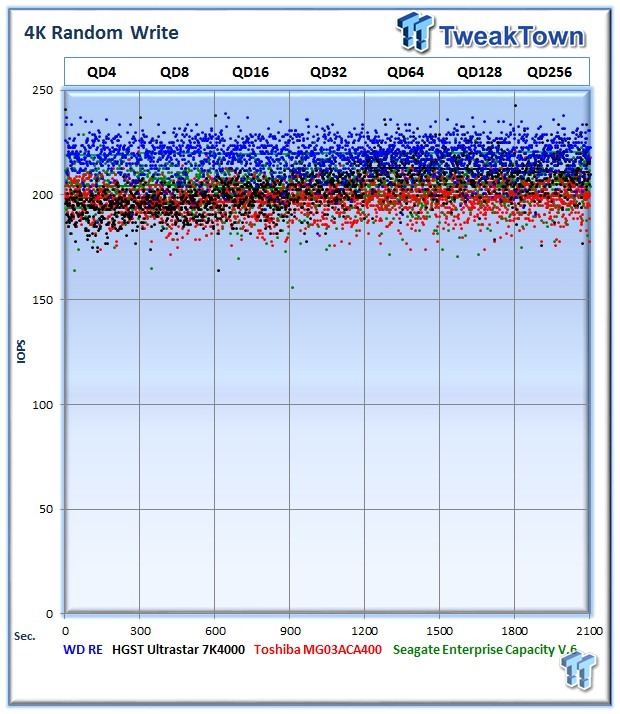
The WD Re averages 220 IOPS at QD256 leading the field, while the HGST Ultrastar 7K4000 averages 211 IOPS. The Toshiba MG03ACA400 averages 199 IOPS in comparison to the Seagate V.6 with 205 IOPS at QD256 in our 4K write testing.
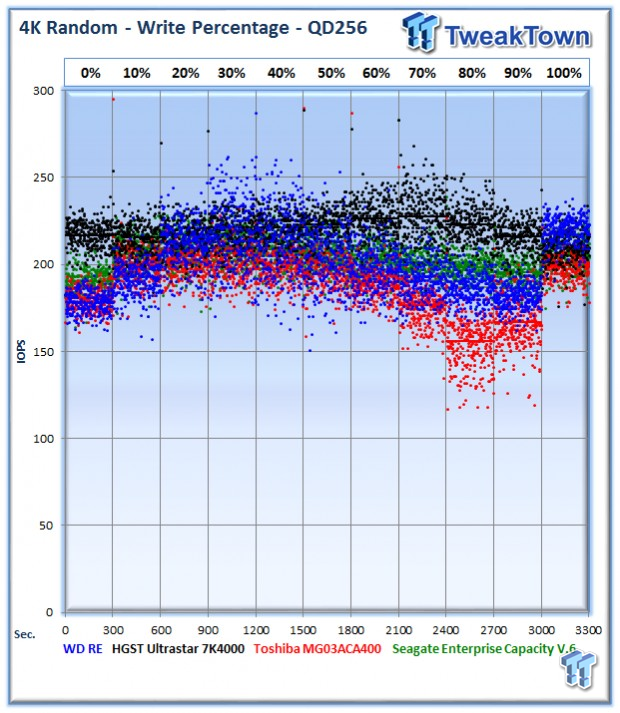
Our write percentage testing illustrates the varying performance of each solution with mixed workloads. The 100% column to the right is a pure write workload of the 4K file size, and 0% represents a pure 4K read workload.
The WD Re provides middling performance in comparison to other 7,200 RPM HDDs with its mixed read/write workload performance.
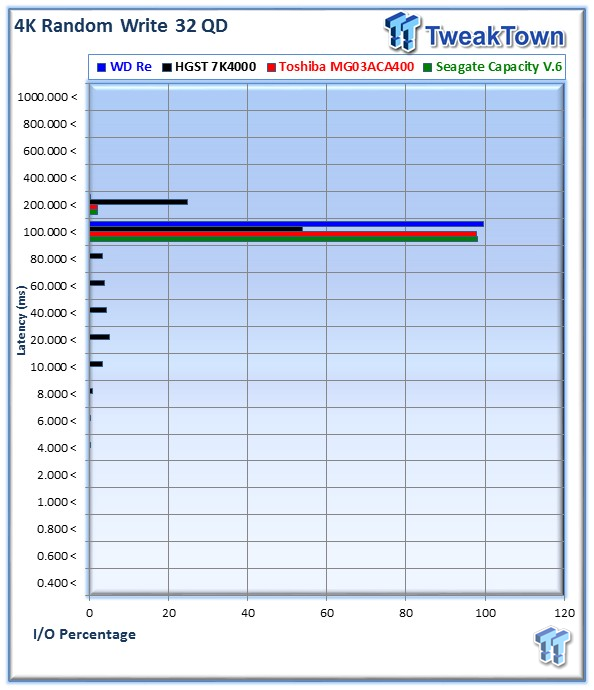
The WD Re provides the best consistency in this test, with the vast majority of I/O's (99.69%) occurring at 100-200ms, and the remaining .31% at 200-400ms. While the 7K4000 has I/O's fall into the lower latency ranges, these are counterbalanced by some operations that take significantly longer than the WD Re.
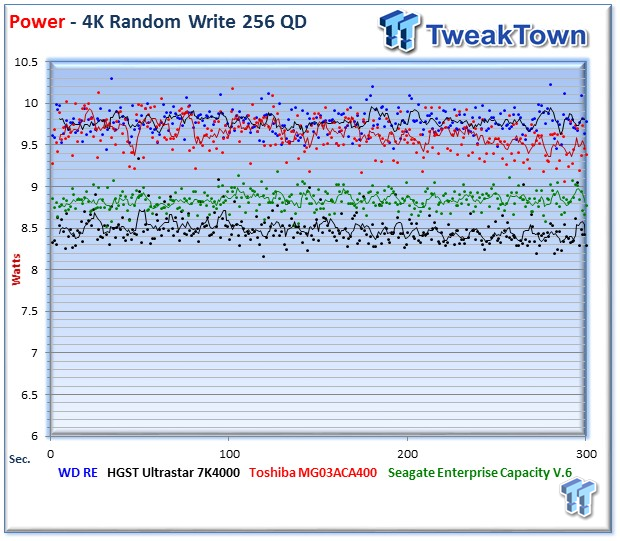
We record the power consumption measurements during our test run at QD256. The WD Re pulls 9.78 Watts during the measurement window, the highest average among the test pool.
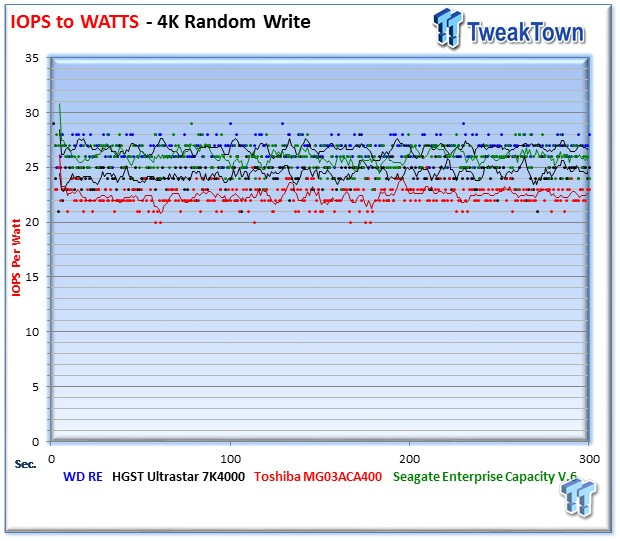
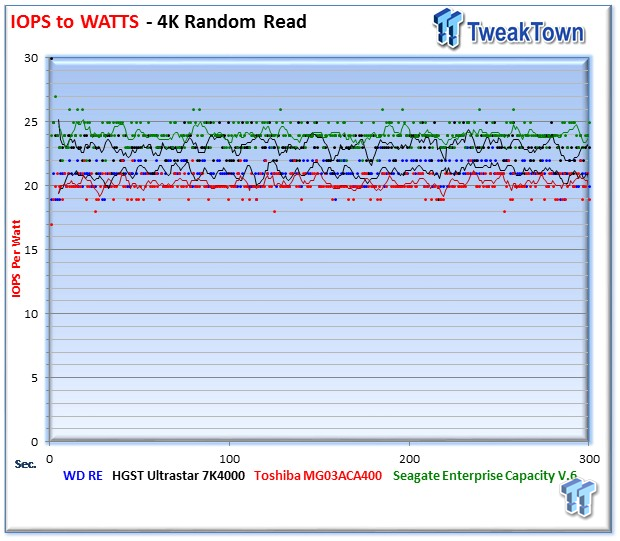
IOPS to Watts measurements are generated from data recorded during our test. The WD Re delivers an average of 26.75 IOPS per Watt for 4K random writes, and 21 IOPS per Watt for 4K random read access. The higher write performance of the WD Re in pure write workloads helps it win the write IOPS to Watts test.
8K Random Read/Write
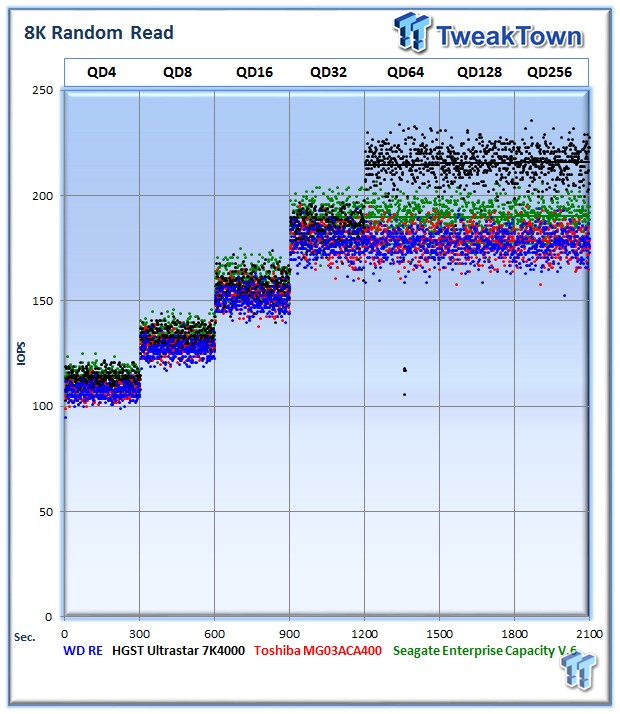
8K random read and write speed is a metric that is not tested for consumer use, but for enterprise environments this is an important aspect of performance. With several different workloads relying heavily upon 8K performance, we include this as a standard with each evaluation. Many of our Server Emulations below will also test 8K performance with various mixed read/write workloads.
The WD Re delivers an average of 177 IOPS at QD256, falling to the bottom of the test pool.
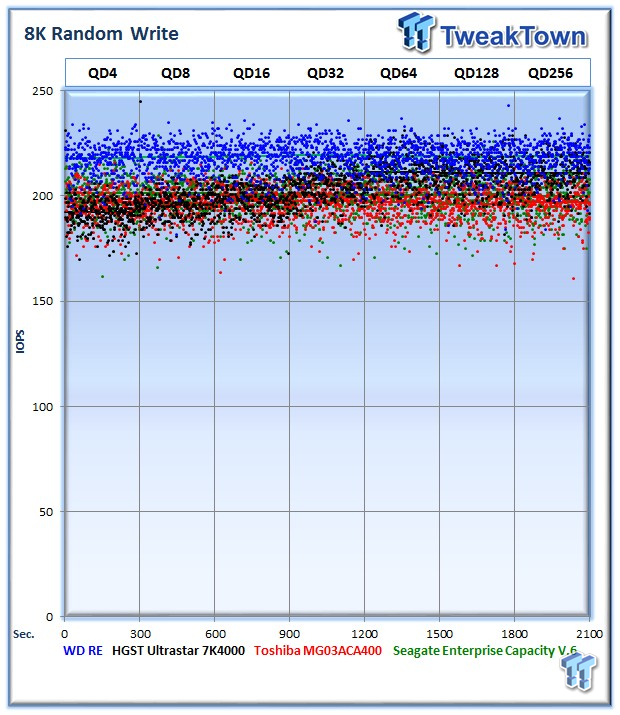
The average 8K random write speed of the WD Re is 219 IOPS at QD256. The HGST HDD measures a lower 211 IOPS at QD256. The Seagate Enterprise Capacity V.6 averages 199 IOPS, followed by the Toshiba MG03ACA400 at 196 IOPS. Once again, the WD Re wins in the heavy random write workload.
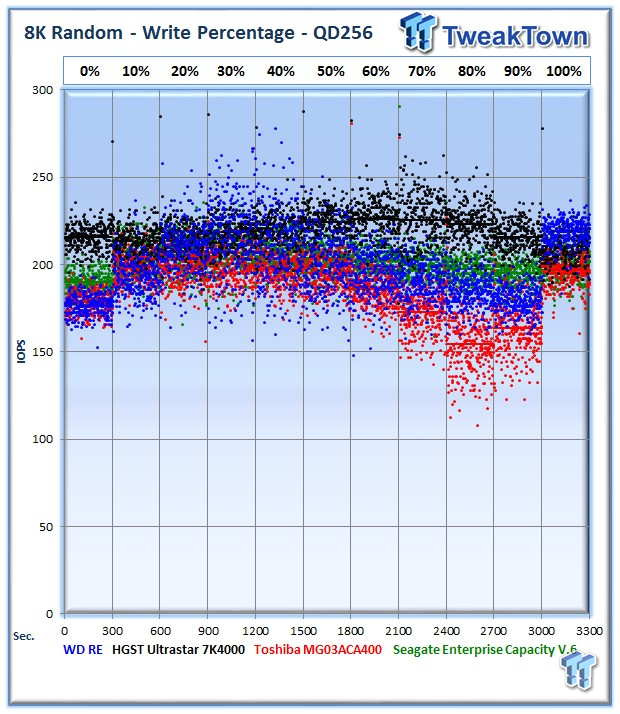
The WD Re provides middling performance in the mixed read/write testing, with a tendency to score very high in the light mixed workloads.
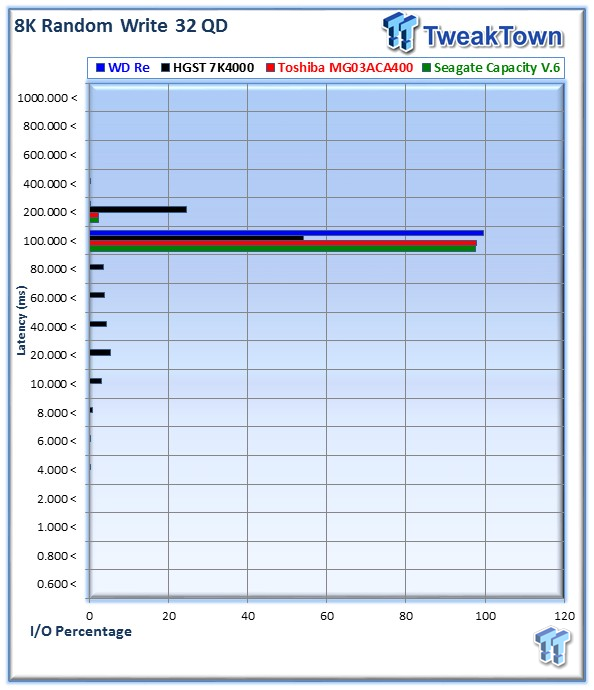
The WD Re is very consistent, with 99.58% of I/O's (65,124) at 100-200ms, and 272 I/O's (.41%) at 200-400ms.
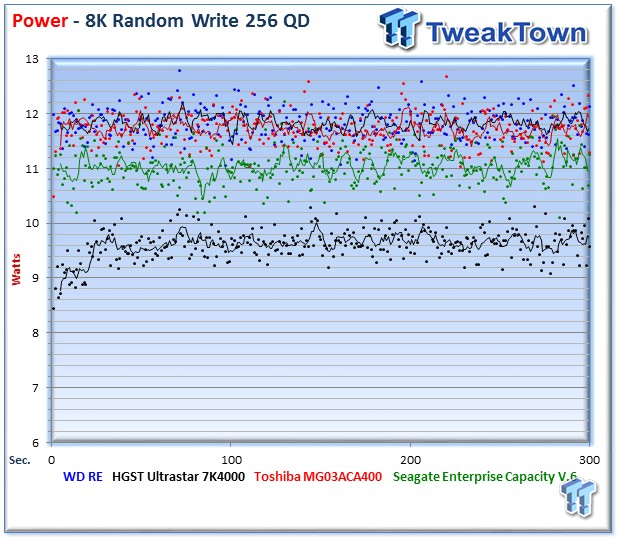
Power consumption for the WD Re averages 11.83 Watts during the test period.
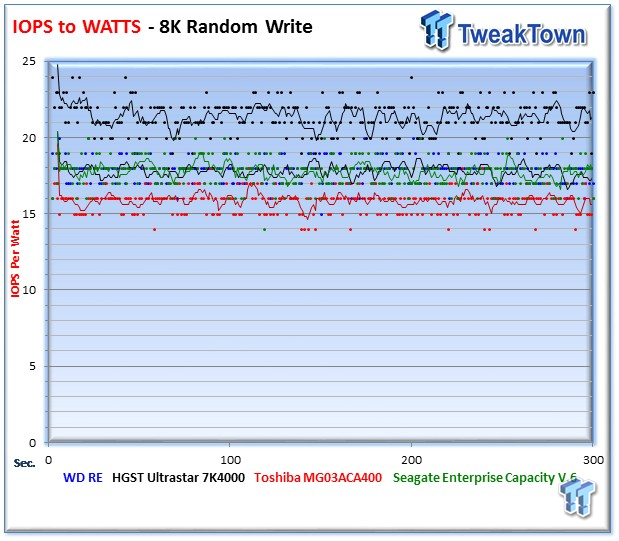
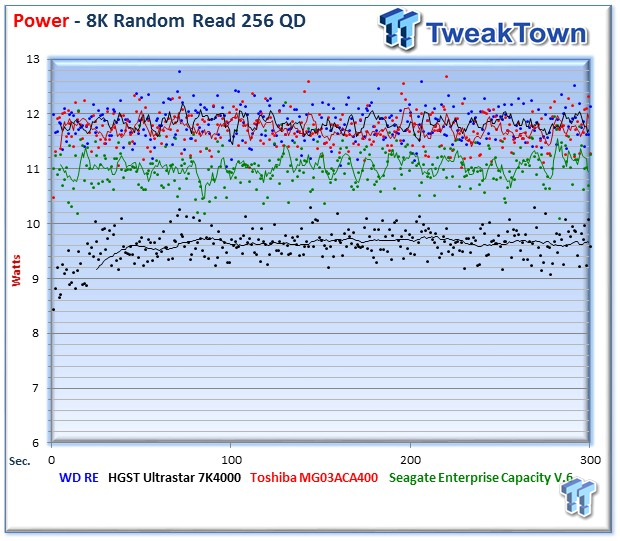
The WD Re averages 17.84 IOPS per Watt in 8K random write, and 14.49 IOPS per Watt for 8K random read access.
128K Sequential Read/Write
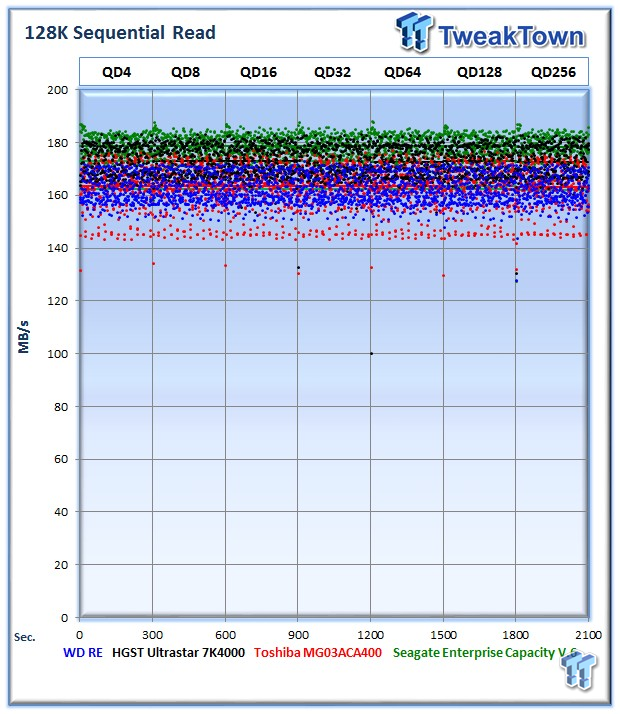
The 128K sequential speeds reflect the maximum sequential throughput of the HDD using a realistic file size encountered in an enterprise scenario.
The WD Re averages 162 MB/s of sequential read speed, the HGST Ultrastar 7K4000 averages 172 MB/s, following the Seagate with 178 MB/s and beating the Toshiba with its 163 MB/s.
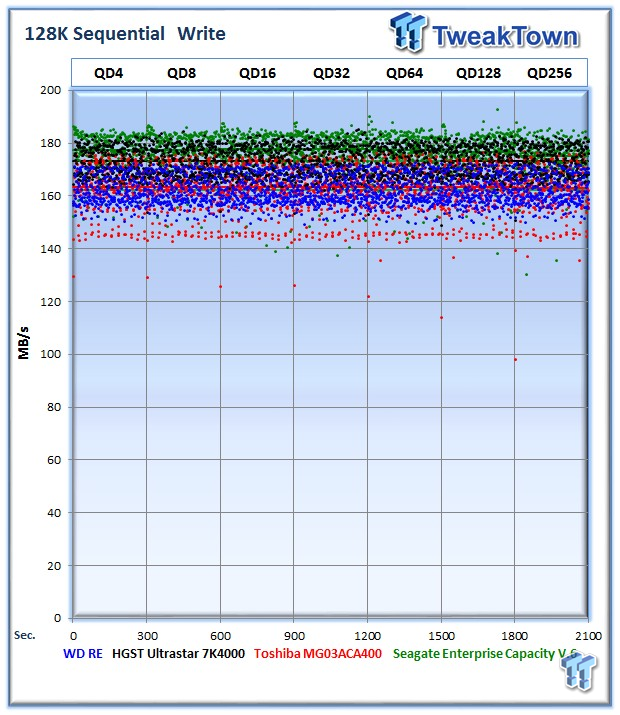
The WD Re averages 162 MB/s of sequential write speed, the 7K4000 HDD averages 173 MB/s, the Seagate averages 175 MB/s and the Toshiba averages 162 MB/s.
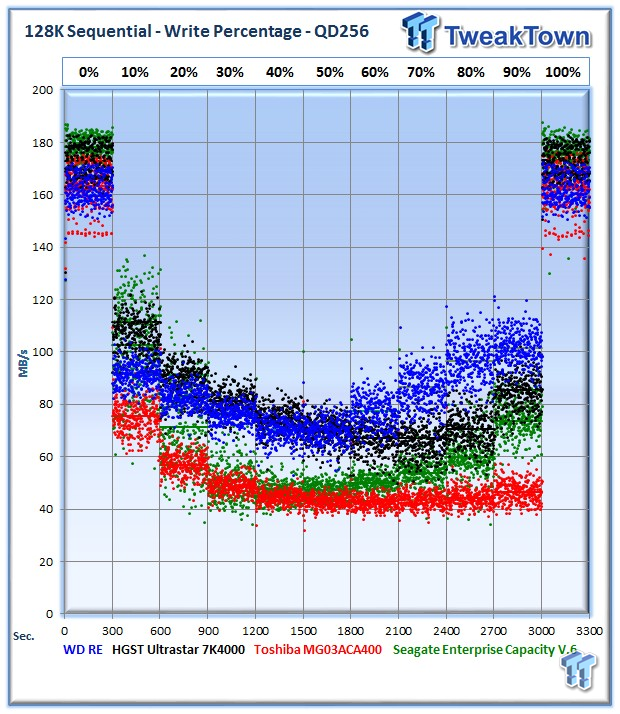
The WD Re posts excellent performance in our mixed read/write testing and leads in this test.
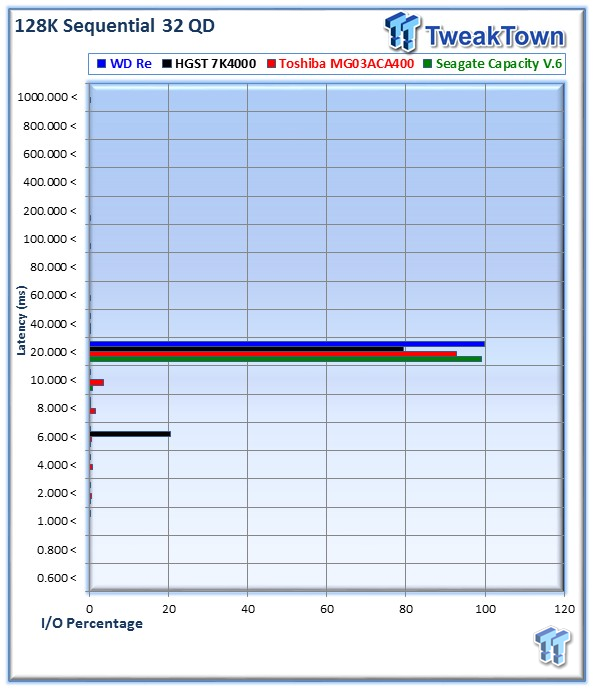
The WD Re offers up 99.68% of requests in the 20-40ms range. This is again the most consistent latency performance among the test field.
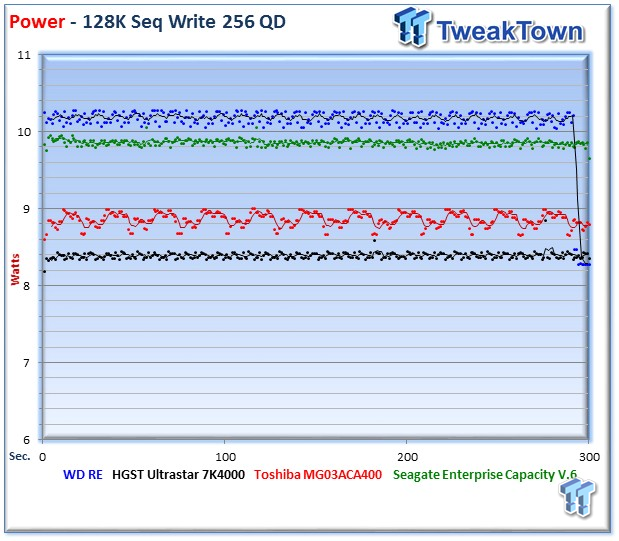
The WD Re averages 10.13 Watts during sequential write testing, besting the other HDDs.
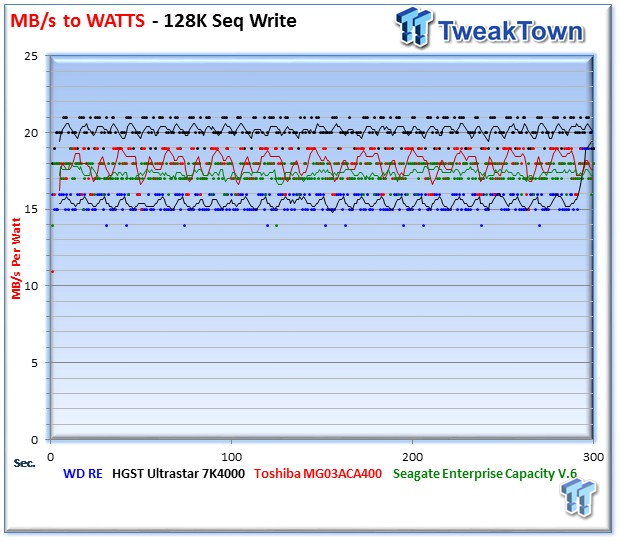
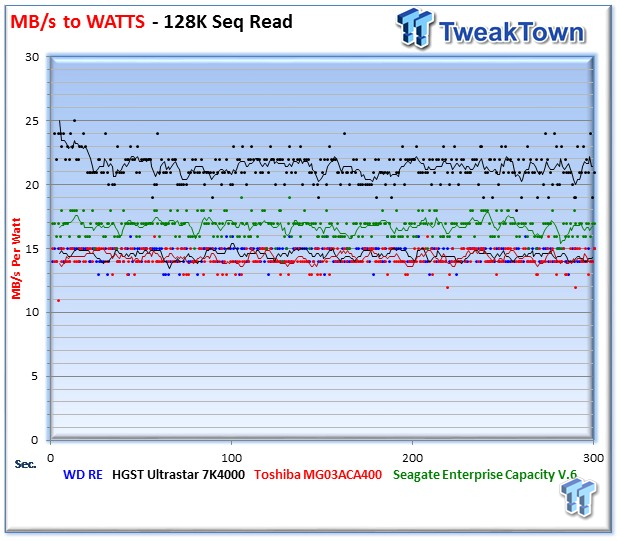
The WD Re provides an average of 15.4 MB/s per Watt for 128K sequential write and 15.51 MB/s per Watt for sequential read.
Database/OLTP and Webserver
Database/OLTP

This test emulates Database and On-Line Transaction Processing (OLTP) workloads. OLTP is in essence the processing of transactions such as credit cards and high frequency trading in the financial sector. Enterprise HDDs are uniquely well suited for the financial sector with their low latency and high random workload performance. Databases are the bread and butter of many enterprise deployments. These are demanding 8K random workloads with a 66% read and 33% write distribution that can bring even the highest performing solutions down to earth.
The WD Re averages 191 IOPS at QD256, beating the Toshiba, but lagging behind the rest of the field.
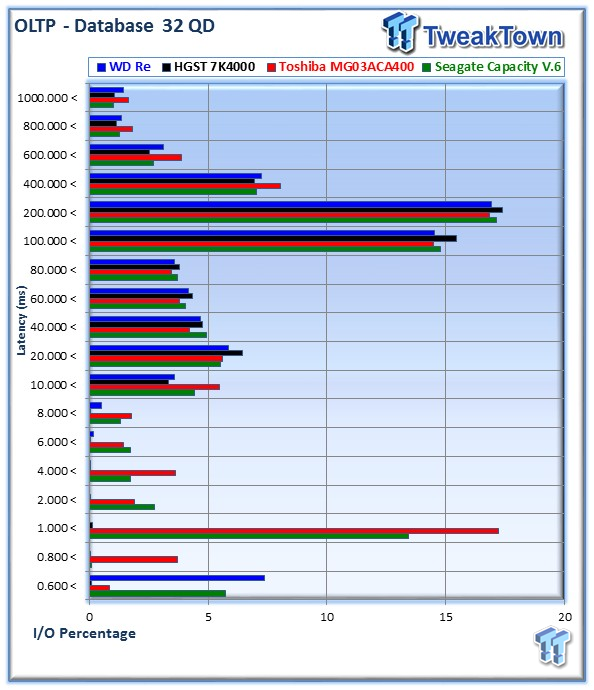
The WD Re offers up a wide range of access time, much like the other HDDs, but the latency distribution falls into the higher ranges.
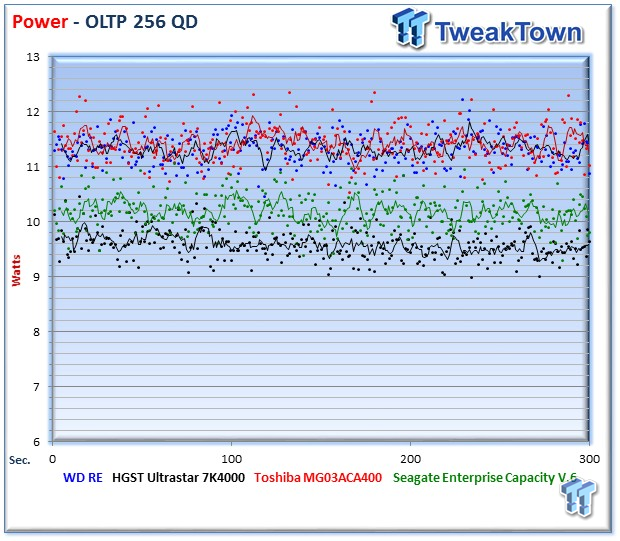
The WD Re averages 11.23 Watts during the test period.
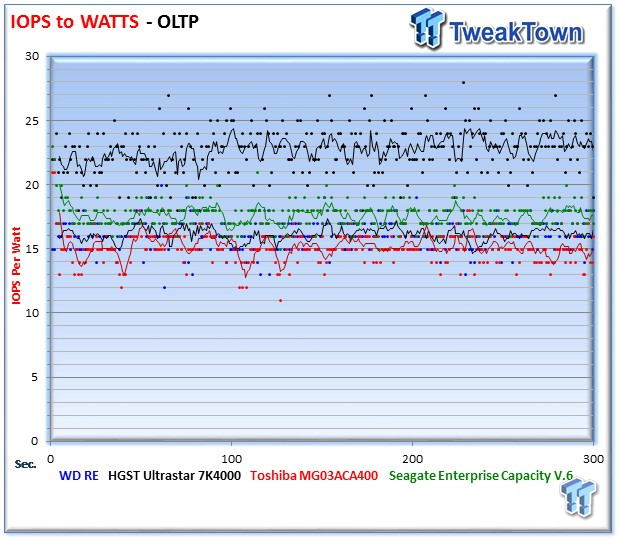
The WD Re averages 16.11 IOPS per Watt in our Database/OLTP testing.
Webserver
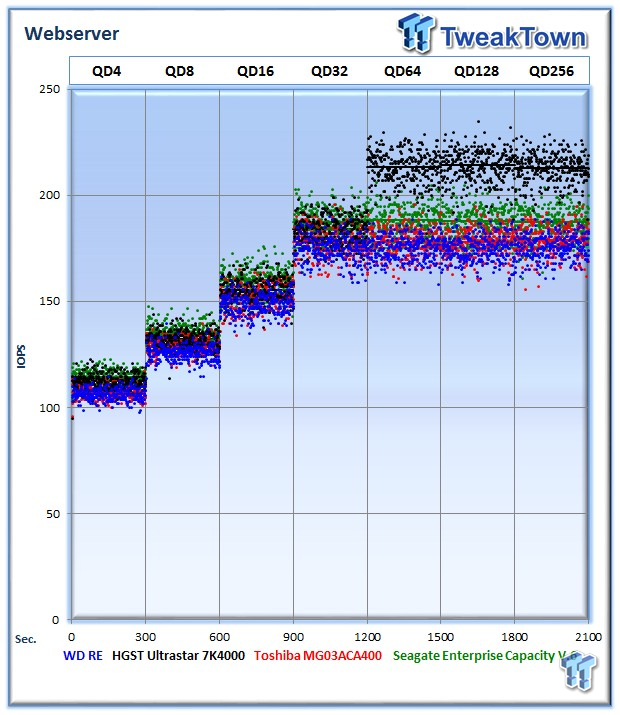
The Webserver profile is a read-only test with a wide range of file sizes. Web servers are responsible for generating content for users to view over the internet, much like the very page you are reading. The speed of the underlying storage system has a massive impact on the speed and responsiveness of the server that is hosting the website, and thus the end-user experience.
The WD Re averages 175 IOPS at QD256.
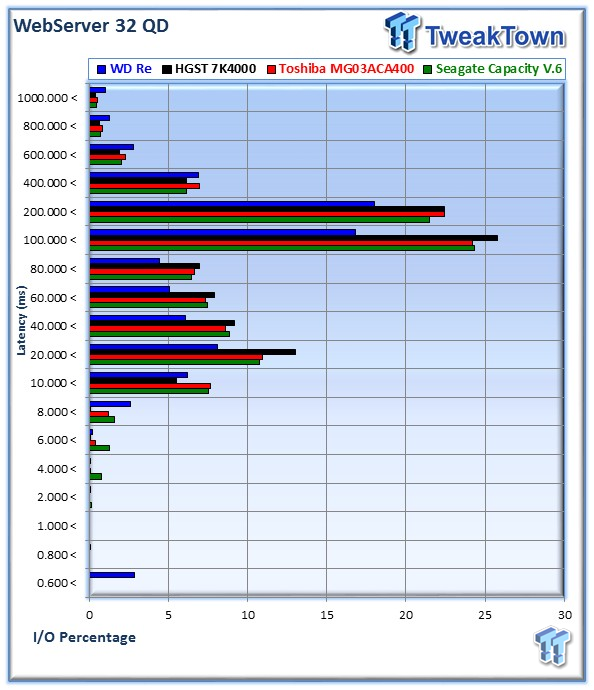
The WD Re has a slightly higher latency range it this pure read test. The Re definitely favors write heavy or mixed workloads.
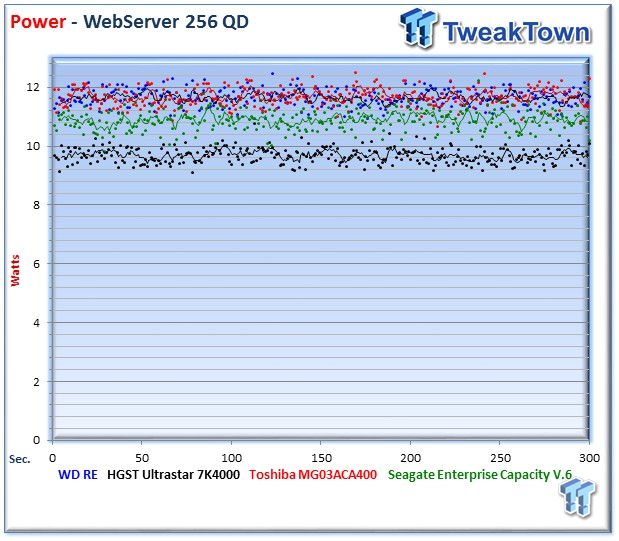
The WD Re averages 11.65 Watts during the test.
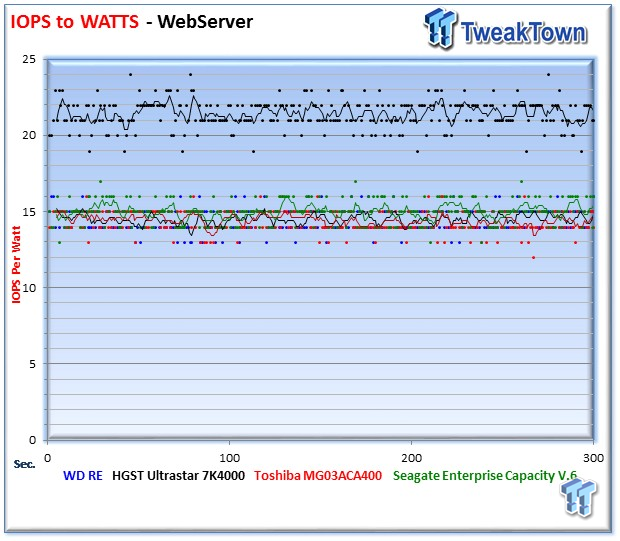
The WD Re averages 14.48 IOPS per Watt during the measurement window, falling well behind the 7K4000, which dominates this test.
Fileserver and Emailserver
Fileserver
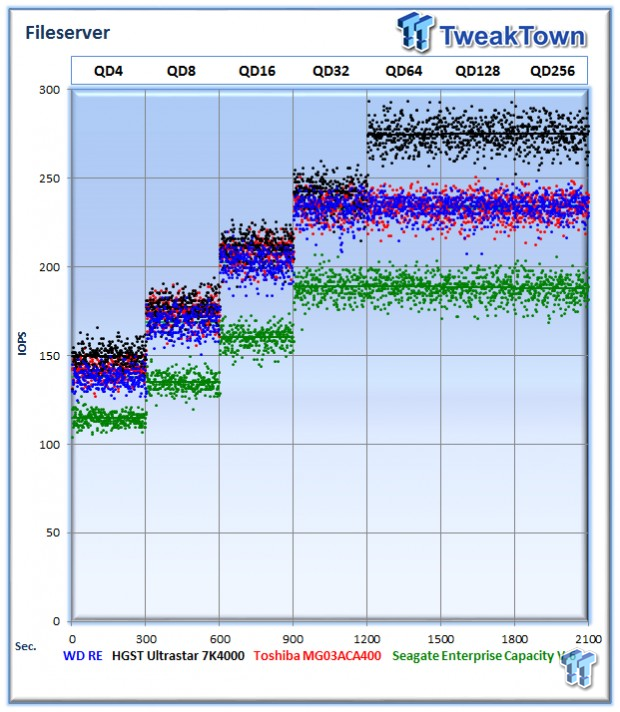
The File Server profile represents typical file server workloads. This profile tests a wide variety of different file sizes simultaneously, with an 80% read and 20% write distribution.
The WD Re averages 234 IOPS at QD256, falling into the middle of the pack.

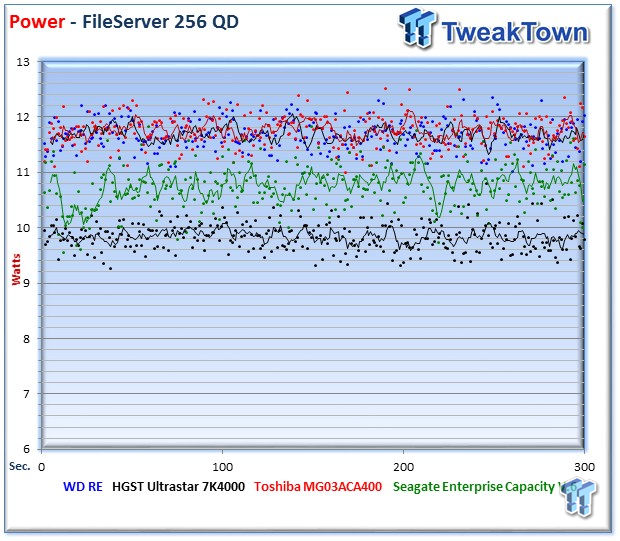
The WD Re averages 11.68 Watts during the test.
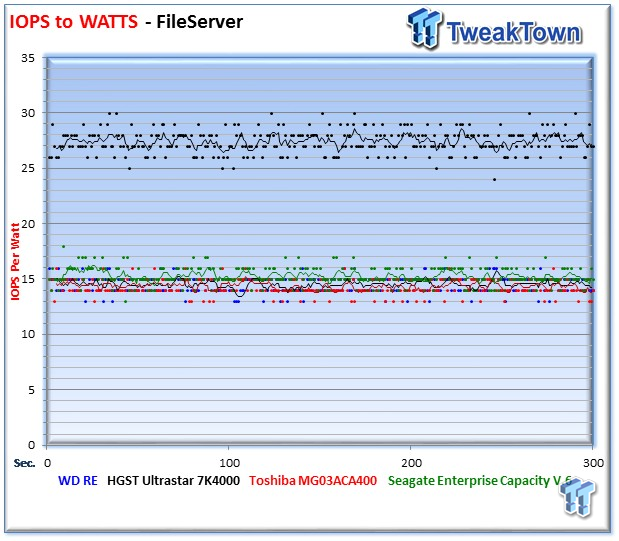
The WD Re averages an impressive 234 IOPS per Watt during the measurement window.
Emailserver
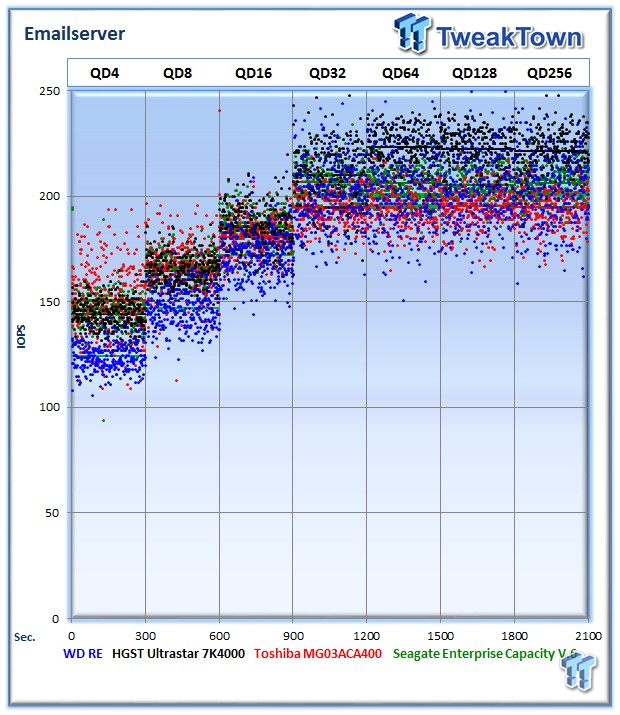
The Emailserver profile is a very demanding 8K test with a 50% read and 50% write distribution. This application is indicative of the performance of the solution in heavy write workloads.
The WD Re averages 201 IOPS at QD256.
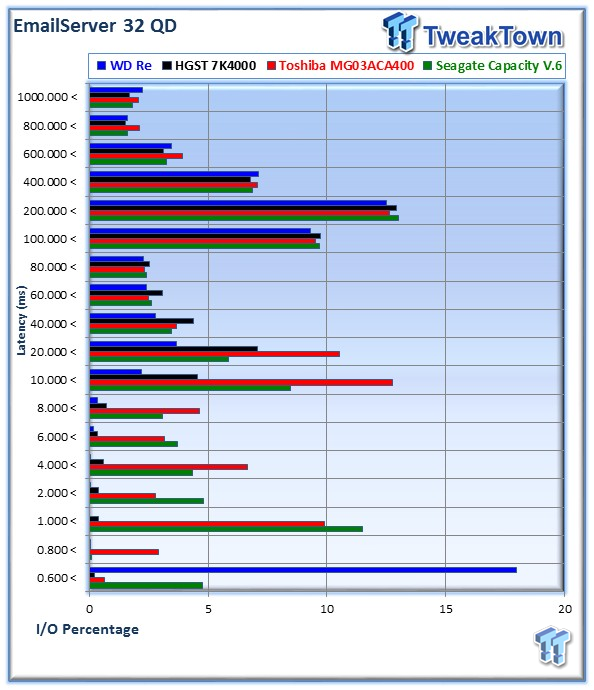
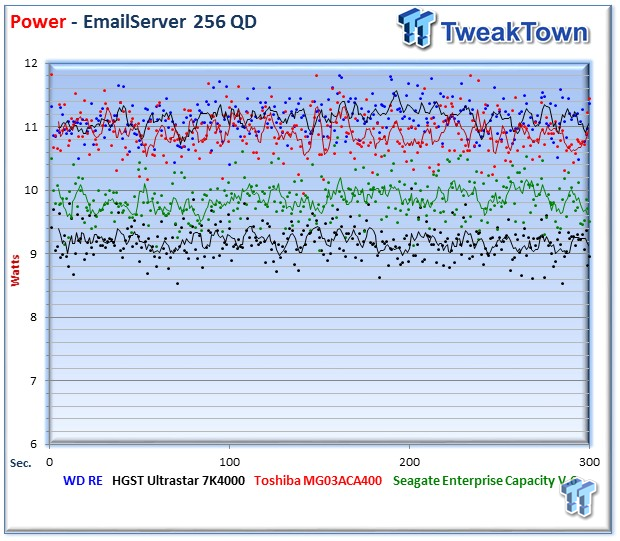
The WD Re averages 11.13 Watts during the test.
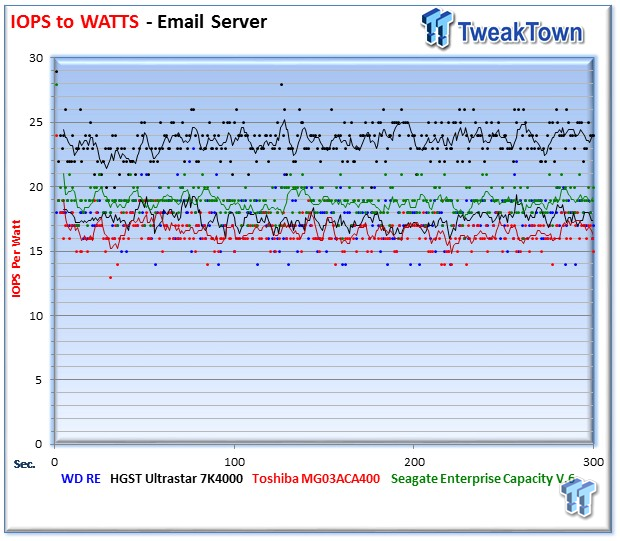
The WD Re averages 17.48 IOPS per Watt.
Final Thoughts
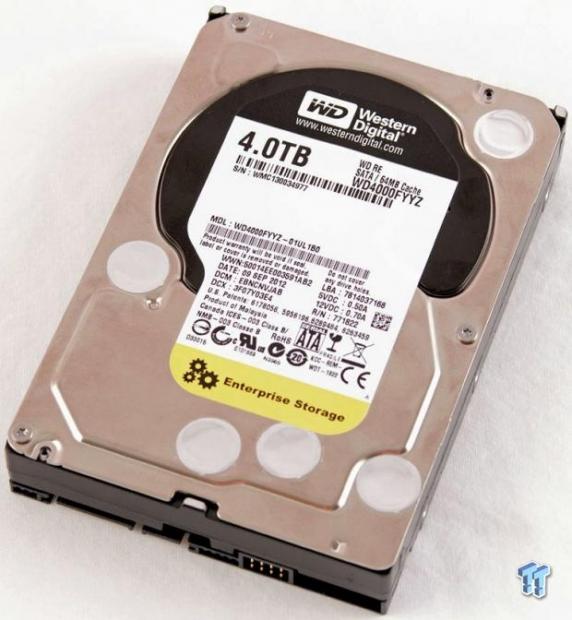
The WD Re addresses the need for bulk storage of cold data, and brings many enterprise-class features to ensure data integrity. The inclusion of both SAS and SATA standards, and at 6Gb/s and 3Gb/s for good measure, allows the implementation of these HDD's into a wide range of solutions.
In our testing, the WD Re delivered exceptional performance in pure write environments, though it did lag behind the competition in read workloads. The 4K and 8K test results were encouraging in random environments, and the 128K sequential tests were particularly impressive in our mixed read/write testing.
The WD Re did have an overall higher power consumption than the rest of the test field, but when measured from an efficiency standpoint in the IOPS to Watts testing, the WD Re scored well in comparison to the rest of the test pool.
A bright spot in the performance of the WD Re was the excellent latency, which scored in tight groups with little variability. With the 7K4000 leading in many performance tests, it was surprising to see the WD Re best it at latency consistency. Some of this is due to the almost bimodal latency performance of the 7K4000.
The WD Re brings a number of features to the table that makes it an attractive solution. The wide range of connectivity options make it deployable into numerous scenarios, and the option of an SED (Self Encrypting Drive) option also provides a means of enhanced data security. This can be beneficial over the course of the drives' life, and during retirement or repurposing of the drive. Features such as crypto erase and the ATA sanitize command can effect speedy data destruction that can save time and money by eliminating the need for physical destruction of the drive.
While the 1.2 million hour MTBF is merely middle of the road for this class of HD, and under the 2.0 million hours of the 7K4000, the WD Re does have the best error reduction technology. This is evidenced by the 10E16 non-recoverable read errors per bits read rating, which is well in excess of the standard 10E15 for this class of HDD.
Overall, there is a delicate balance of a number of factors to take into consideration. Reliability, performance, latency and power consumption are all factors to weigh when choosing the correct solution for the workload. The WD Re brings several features to bear, such as TLER, dynamic fly height technology, NoTouch ramp load, multi-axis shock sensors, StableTrac and dual actuator technology that all combine to provide the enhanced functionality of a drive with an excellent 10E16 rating.
Unfortunately, the 7,200 RPM 4TB HDD lineup is very competitive, and the pricing of the WD Re can be prohibitive when compared to other solutions. This can be a premium for the enhanced reliability borne from the extensive testing and inter-operability qualifications, but many will opt for higher performance solutions at a lower price.

